#holistic self-care for black women
Text
What they don't tell you about manifesting
A lot of folks talk about manifesting what you want in your life and I think that’s great. But the thing is that rarely are people talking about the truth of what doing that work entails which leads me to believe that they may be missing some key components. Manifestation is great work and it can be a lot of fun, but if you are not doing “the work” then your manifesting will not be successful. In the episode I talk about my journey and what I’ve learned.
#black women spiritual wellness#healing spaces for black women#empowering black women spiritually#sacred self-care for black women#black women's holistic healing#mindfulness for black women#inner peace for black women#spiritual growth for black women#wellness resources for black women#black women's meditation practices#self-discovery for black women#affirmations for black women#holistic wellness for black women#mental health support for black women#community for black women's spirituality#black women's holistic living#nurturing spirituality in black women#holistic self-care for black women#healing journey for black women#black women's spiritual empowerment#blackwellness#healing#ihpwellness#wellness#selfcare#selflove#qtbipocwellness#qtbipoc#spiritualwellness#blackwomenhealing
2 notes
·
View notes
Text
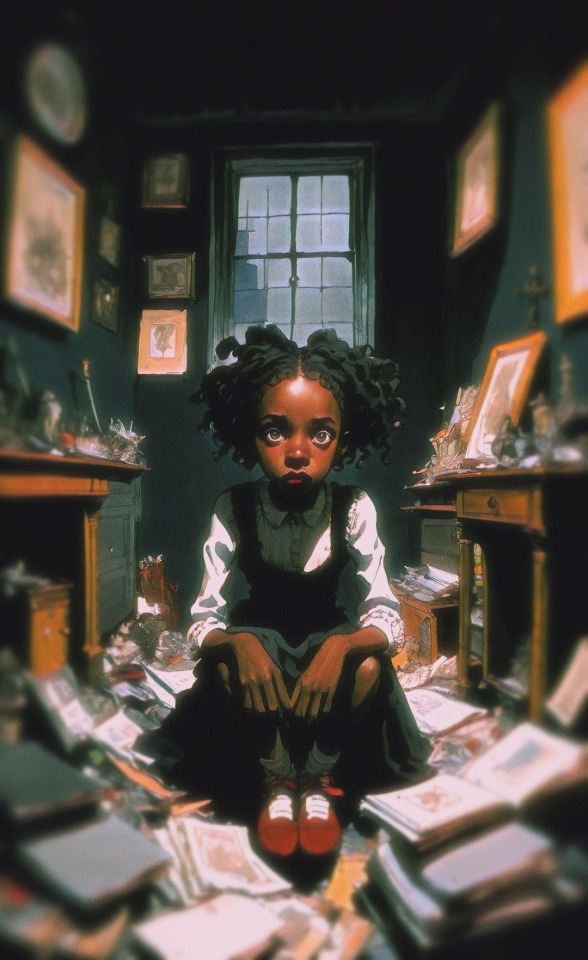
My inner child, though in a vault of scattered childhood memories, is always attentive when love is present.
#pagan#spiritual healing#healing#spirituality#nature#paganism#earth#worship#self care#altars#black women#woc#inner child healing#inner child#self love#self empowerment#self discovery#black pagans#witches of color#black witches#black witch#spiritual practitioner#holistic practitioner#photo#quotes
15 notes
·
View notes
Text
Hi there!
Happy new week lovelies. It is self-care Sunday here on Love Dvra.
We are black history, but do we love where we are now? Do we love who we are now? When you look in the mirror do you admire what and who you see? Is your body a loved, protected home or a tired, overly-criticized vessel that gets you through the day?
It is a conversation I’ve had with myself several times. Here is what I uncovered.
As a young girl and teenager, my natural hair was heavily criticized and rarely complimented. It was “too nappy, too dry, too frizzy, too short, too kinky, or too hard to manage”. In my teen years, I desperately wanted a perm to stop those criticisms and the weight of negative emotions that came after hearing them. In my logical mind, a perm would make it easier to try new hairstyles. My go-to style was three puffs- two in the front and one in the back. I did not know how to take care of my hair. Sometimes dealing with it made me feel powerless. It was a challenge to feel confident in my appearance. There were very few hairdressers who knew how to style my hair. Most of their methods included heat, rough detangling and gel, which led to breakage. Yes, I hated my hair. Even now, I find myself reacting to it in ways others did in the past. It is so ingrained in my psyche that even when I see the beauty of my hair now, sometimes it feels like it’s not enough or should be different to be better. Can we call it hair trauma?
Now I wear my hair natural mainly because it is more affordable and I know how to take care of it as is. However, there is still so much I would like to learn to treat it better. If I were to change my hair, I’m at a point where it would be from a place of necessity or curiosity instead of a need to fit in or for others to accept me.
This inner dialogue about my body and hair made me question a lot of what I considered to be beautiful. What is beauty to me and how do I want to express that?
I am still creating that, but so far I know I want to be healthy. I know I want to remain authentic.
Koroba braids, bantu knots, afros, locs, weaves, perms, waves, pin curls- I want to try them all! The versatility black women have created for their hair and the stories that can be told from our style positively intrigues me. Beauty is a holistic experience. It is physical, creative and also spiritual, mental, and emotional to me. A black woman who loves her natural hair and complexion is less likely to perform her blackness and feminity in any space she enters. She simply exists and radiates as is. I can’t deny that the perception of blackness and beauty creates tension at times. We are so accustomed to being treated as spectacles when we show up as ourselves that some of us put up a wall. Like myself, it can be weary to constantly ignore people’s comments on the natural state of your hair, especially around people who we hoped would do better.
These days I’ve had to guard myself against comments from a few persons in my life. They have natural hair, but the only way they can accept it is if it is in braids, cornrows or a bun. At times I’d like to ask them if my shrinkage is too black for them. We learned to diminish our natural appearance to appease those in charge of corporate spaces, schools, financial institutions and governance so we could gain access to the important support they offered. Mind you, the state of my hair is merely for my convenience. I will straighten it as long as it is safe and convenient to do so. However, it is so funny how it is perceived as defiance of authority or the status quo in its natural state. Why does the status quo think tightly coiled African hair is a rebellion?
If we all were to allow these limitations to stop us, where would we be as a people? Our ancestors fought for freedom, for access to basic needs and for a better tomorrow. Now, we fight for unbiased access to spaces we qualify for, we fight for rest and softness, we fight to be able to express the full range of our emotions without being labelled as threats, and we fight for generational...
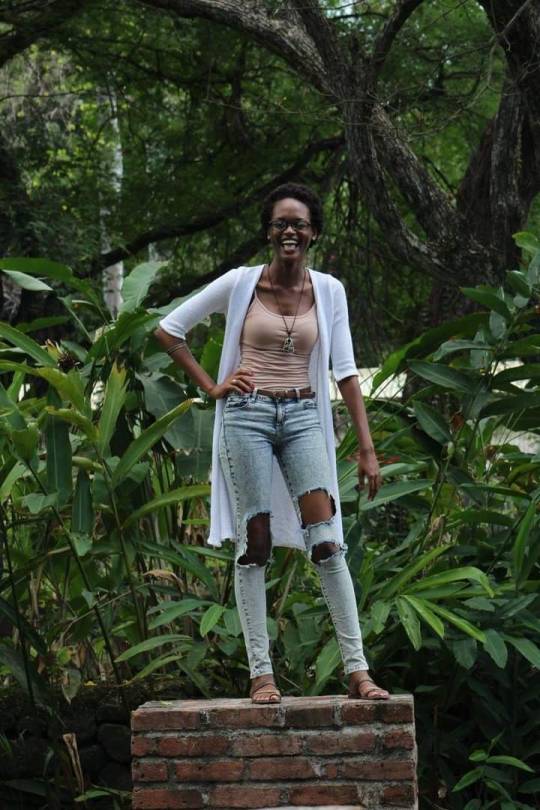
View On WordPress
0 notes
Text
youtube
Reproductive health and Reproductive Justice
A Brief History
#6 During the 20th century it became socially apparent that a major factor contributing to poor health of women of colour were reproductive tract infections (RTFs) (Onwuachi-Saunders, 2019). To address this issue, Loretta J. Ross became a co-founder of an initiative known as The Women of Colour Reproductive Health Collective or SisterSong, along with Dazon Dixon Diallo (Onwuachi-Saunders, 2019). This initiative supported organizations that addressed issues vital to reproductive health (such as prevention, HIV/AIDS services, midwifery, substance abuse, human/health rights advocacy, self-help care, and reproductive rights) to identify concerns, treatments, and enhance the awareness of issues surrounding reproductive health of women of colour (Onwuachi-Saunders, 2019). At the core of these initiatives was an intersectional approach based on the factors of race, socioeconomic status, ethnicity, and gender to better understand what linked these issues to reproductive health (Onwuachi-Saunders, 2019).
Forming Reproductive Justice
Spear-headed by women of colour, this initiative came to form conclusions that reproductive health is polarized between the 'prolife/prochoice' frameworks with a limited scope of all the issues that women of colour face (Onwuachi-Saunders, 2019). Thus, these movements argued that a holistic approach to women's reproductive health is the best way to meet all of their needs and is central to the health of marginalized communities who manage deeper political and social issues contributing to issues in reproductive health (Onwuachi-Saunders, 2019).
In response, in 1994 The Women of African Descent for Reproductive Justice in Chicago recognized that reproductive rights movements led by middle class white women were not inclusive of low income, marginalized, and racialized minority women, so they coined the term Reproductive Justice to officially address these issues.
"Reproductive justice is defined as the complete physical, mental, spiritual, political, social and economic wellbeing of women and girls, based on the full achievement and protection of women’s human rights (Ross, 2007; Ross, Solinger, 2017, as cited in Onwuachi-Saunders, 2019)". The Movement of Reproductive Justice began with a published statement of 800 signatures in the Washington Post and Roll Call which was a catalyst for SingerSong (Onwuachi-Saunders, 2019).
Current Movements
These grassroots organizations laid the foundation for the #MeToo movement (founded in 2006 by Tarana Burke) and the Women's March (founded in 2017 by Teresa Shook), both of which address different human rights issues such as sexual assault, gendered violence, reproductive rights, 2SLGBTQQIA+ rights, civil rights, civil rights, disability rights, immigrant rights, and environmental justice (Onwuachi-Saunders, 2019). However, these movements receive more media attention then the Reproductive Justice Movement which most appropriately addresses the impacts of race, culture, socioeconomic status which these current movements still perpetuate to some extent (Onwuachi-Saunders, 2019). As a result, unfortunately women of colour from low socioeconomic backgrounds remain neglected despite strong movements for reproductive health (Onwuachi-Saunders, 2019).
Therefore, the demands of the Reproductive Justice Movement remain unmet which is exemplified through the racial bias and mistreatment within the medical system that Black and Indigenous women face in Canada and the US (Dayo et al., 2022).
References
Onwuachi-Saunders, C., Dang, Q. P., & Murray, J. (2019). Reproductive Rights, Reproductive Justice: Redefining Challenges to Create Optimal Health for All Women. Journal of Healthcare, Science and the Humanities, 9(1), 19-31. https://www.ncbi.nlm.nih.gov/pmc/articles/PMC9930478/
Dayo, E., Christy, K., & Habte, R. (2022). Health in colour: black women, racism, and maternal health. The Lancet Regional Health - Americas, 17, 100408. https://doi.org/10.1016/j.lana.2022.100408
0 notes
Text



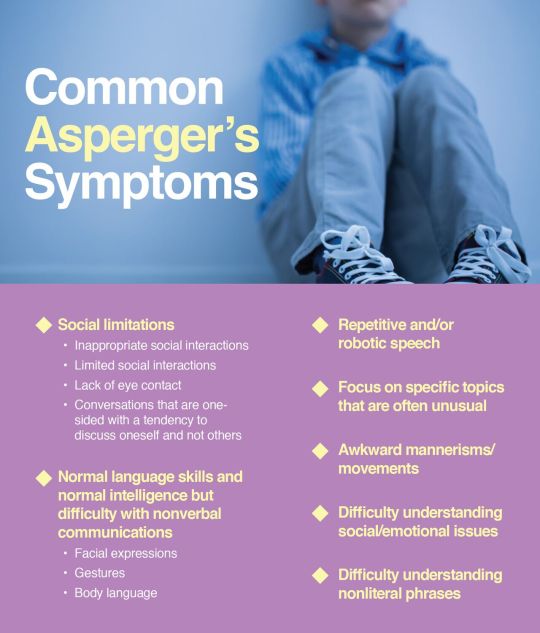

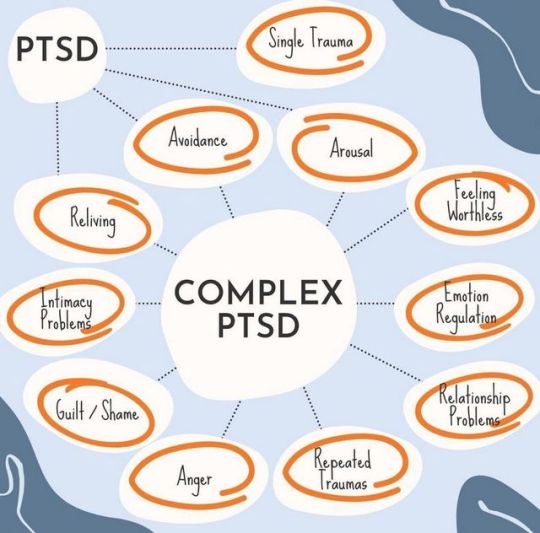
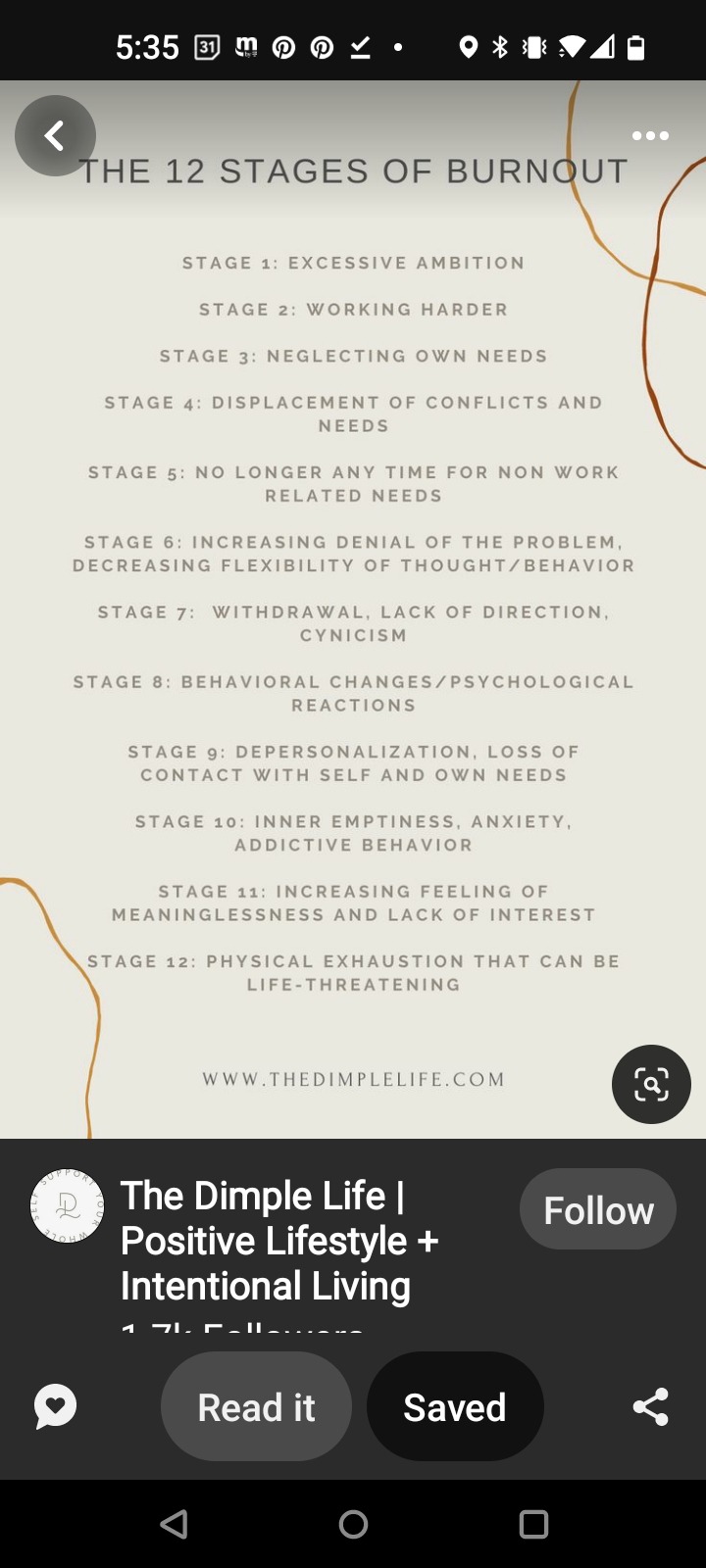

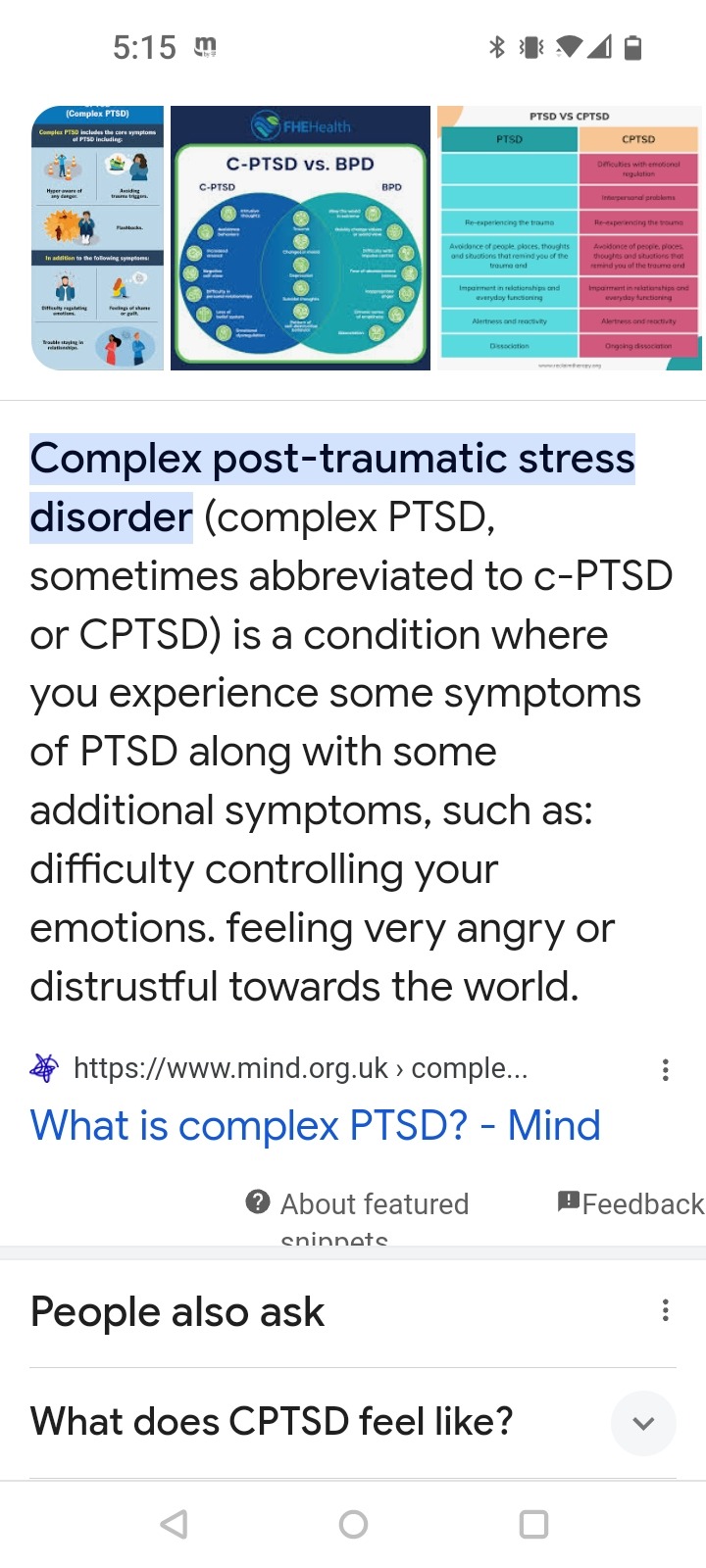
My mom whose a narcissistic parent told me that I was self diagnosing. They often differ to that when you have an answer to their behavior. I know I am masking. I know that I am autistic. It is rare for a young black female to be diagnosed. People in their late thirties especially minority females are just now being diagnosed with it. My mom said since she didn't notice it in my childhood then I can't be. She is adamant that it is schizophrenia and bipolar disorder because she read about it. She refuses to accept any of the reading material I give her. She wants to be a psychologist because she went to a few group meetings and feels that people need her help. Psychology doesn't screen for narcism or autism. They're questions are generally structured towards the side effect of the medication. It's a 5 minute appointment. So the next time I see the psych I am going to have to ask to be screened. My mom keeps admitting me into the psych ward. I don't know what other answers they are looking for if she wont accept mine.
She tells me I need to 🤐🤫 the mind 🧠 to distract yourself. Meditate. So now she's some expert because she listens to apps on the playstore.
It is a cry 😭 for help. I am trying to move out so that I am not subjected to this treatment from her. She plays like the good guy and that I am the crazy one no one will ever listen to. She has isolated me from family and friends. She tells people that I have a mental illness not condition. It was hereditary so that would also be a fault of her own. There is a history of mental illness in the family. So she's the only one who didn't get it?
I have practiced these social skills. I work in customer service 🐕🦺 and have been doing so for the last twenty years. What you can't get it learn from home you can learn outside the home. So I took college classes that she is unaware of. She doesn't even give me credit for going to college. She thinks I'm retarded. Slow. That is the psychology of black women. They think because you are black your dumb. Ugly black doll test. Then she must also feel that way about herself. She is projecting that on to me. I'm her psychology rants if how she is so much more educated because she took such and such class and she graduated she feels she is better than me. I dropped it. I didn't see the point of contributing especially when she continues to reject the fact that I am sports medicine 🌿💉 I am an herbalist. Exercise scientist. I decided to go a shorter route and get a certificate in holistic wellness as a 🦮 we too know psychology. I have been working in the field for twenty years. We dont diagnose. We refer you to your primary care. It's a wellness center aka spa. Alternative 💊💉 is complimentary and supplementary to your Western care. Many people are abandoning Western 💊💉 because they haven't provided any answers. So I wouldn't be any different to give up on them because I found the answer myself. Self help books provide that for you. Self diagnosing is like them making fun of you for checking the Internet for your signs and symptoms. My mom feels that is ok to be judged and diagnosed by her and other white medical professionals.
Psychologically black women are the ugliest in the world 🌍 i do statistics. I don't know the last time she read a scholar study. I didn't think I've even seen her on Wikipedia. She has admitted she doesn't write papers. I would be an English lit 🔥 major if I didn't choose to go into sports med. There is only so much you can do with an English lit degree.
#spirituality#consciousness#meditation#wisdom#motherearth#holism#medicine#mothers day#mother#autism#autistic adult
0 notes
Text
Life Transitions Therapy in Miami, FL

You’re ready to win Adulting
Life’s journey is full of twists and turns, and navigating change can be a wild ride. At Wasabi & Well, our Life Transitions Therapy is your GPS for the road ahead. Let’s not just survive transitions; let’s thrive through them.
Our Approach
Major life changes can be daunting, but they’re also opportunities for growth. Our skilled therapists are here to guide you through career shifts, relocations, or any significant life milestone. We focus on empowering you to adapt, grow, and find meaning in the midst of life’s transitions.
What to Expect
Customized Coping Strategies: Develop personalized coping mechanisms to navigate the uncertainty of life changes.
Goal Setting and Planning: Create a roadmap for your future, aligning your aspirations with your values.
Emotional Resilience Building: Equip yourself with emotional strength to face life’s uncertainties with confidence.
Call It What You Want: We are not here to label you. Our focus is on your specific experiences.
Future Self: There’s a future version of you waiting to happen. She’s in a healed headspace that allows her to navigate this biased world in newly empowered ways.

Why Choose Wasabi & Well
Immediate Appointments: You can book a consultation with one of our team members with minimal wait time.
Holistic Healing: We believe in treating the mind, body, and soul for comprehensive well-being.
Cozy Care: Curl up in your comfiest clothes and talk to us from the comfort of your home. Our telehealth services are confidential, HIPAA compliant, and can be done from both your laptop and your phone.
Culturally Centered Approach: Our therapists understand the unique experiences of Black women and create a space that celebrates your identity.
Affordable Care: We accept multple insurance carriers, offer sliding scale rates, provide weekend wellness courses packed with therapeutic skills like emotional intelligence building, and with bundled packages you can use Affirm to cover costs.
Take the First Step
Your journey to joy starts with a single step. Reach out for a confidential consultation and let’s embark on this healing journey together.
Contact Us.
0 notes
Text
Wellness factors we expect to trend in 2024
As the first PR firm to focus on wellness we’re not just looking back at the last year, we’re reflecting on the past three decades and watching the focus on health move from habit to lifestyle. There isn’t a major health trend that has impacted the 21st century that Trent & Company hasn’t been a part of.
Here are the top five shifts we hope to see in the next year.
Automated Self-Care Revolution: Anticipate a surge in automated self-care solutions as spas grapple with labor shortages, and individuals seek touchless experiences. From touchless therapeutic baths to water-jet massages, the year 2024 will witness a proliferation of self-automated saunas and decompression rooms, offering a diverse array of options for personalized wellness without the need for human touch.
Economy Wellness Wave: The year 2024 will mark a shift towards economy wellness, where individuals actively seek affordable and accessible daily self-care. Expect a rise in cost-effective treatments, technologies, skincare, and supplements provided by wellness professionals. This trend reflects a growing awareness that well-being should be within reach for everyone, irrespective of financial constraints.
Rise of Self-Monitoring Technologies: Witness an upsurge in technologies catering to the demand for self-monitoring. From sleep depth to vitamin levels, people will embrace devices that provide real-time insights into their health. These technologies will not only empower individuals to proactively manage their well-being but also facilitate seamless connections with healthcare professionals for personalized guidance and intervention.
Head Health Dominance: In 2024, head health will take center stage, acknowledging the crucial role played by the ear, nose, and throat in overall well-being. From fashionable sun protective hats to the practice of nose washing, a holistic approach to head health will gain prominence. Additionally, the value placed on emotional intelligence will surpass the allure of artificial intelligence, emphasizing the importance of emotional well-being in the pursuit of a healthier life.
Minority Heroes in Wellness Entrepreneurship: The trend of minority business owners rising to the forefront will continue in 2024. Witness the transformation as these entrepreneurs become the new majority in the wellness industry. Consumers will actively encourage and support black-owned and women-owned businesses, contributing to a more diverse and inclusive landscape of wellness products and services.
These trend predictions for 2024 showcase a dynamic and inclusive future for the wellness industry, where technology, affordability, self-awareness, and diversity intersect to redefine how individuals approach and prioritize their well-being.
Talk to us about finding your wellness factor and sparking a trend of your own in 2024.
0 notes
Text
Embracing Gratitude and Self-Care: A Journey to Empowerment

Introduction
In the hustle and bustle of our daily lives, it’s easy to overlook the power of gratitude and self-care. As the year winds down, there’s no better time to reflect on these essential practices, especially for the incredible Black women at the heart of our community. At Wasabi & Well, we believe that embracing gratitude and prioritizing self-care is not just a luxury; it’s a revolutionary act of self-love and empowerment.
The Gratitude Advantage
Gratitude isn’t just a fleeting emotion; it’s a mindset that can transform your life. In a world that often highlights challenges, taking a moment to appreciate the positives can be a game-changer. For Black women navigating the complexities of life, acknowledging and celebrating achievements, no matter how small, is a powerful act of self-love. It’s a reminder that every step forward is a victory worth savoring.
Practicing Gratitude Daily:
Incorporating gratitude into your daily routine doesn’t have to be a grand affair. Start small—maybe a gratitude journal where you jot down three things you’re thankful for each day. It could be a supportive friend, a moment of joy, or a personal achievement. By consistently focusing on the positive, you cultivate a mindset that attracts more positivity into your life.
Self-Care as a Revolutionary Act:
Self-care is often misunderstood as a luxury, but in reality, it’s a revolutionary act of reclaiming your time and energy. For Black women, who often carry the weight of various responsibilities, prioritizing self-care is a powerful form of resistance against burnout. It’s saying, “I am worthy of care and attention.”
Setting Boundaries as a Form of Self-Care
Healthy boundaries are a cornerstone of self-care. In a world that demands so much from Black women, learning to say no when necessary is an act of self-preservation. It’s about creating space for your well-being, acknowledging that you are not just defined by your responsibilities but by your inherent worth.
Join Our Wellness Journey
At Wasabi & Well, we understand the unique challenges Black women face, and our wellness courses are crafted with your empowerment in mind. From guided gratitude practices to boundary-setting workshops, we’re here to support you on your journey to holistic well-being. Because when Black women thrive, our entire community thrives.
Conclusion
As we approach the year’s end, let’s embrace gratitude and self-care as not just seasonal practices but as integral parts of our lives. At Wasabi & Well, we invite you to join us on this journey of empowerment, where self-love and well-being take center stage. Because you, dear Black woman, are deserving of all the love, care, and gratitude in the world.
If you’re interested in scheduling an appointment or you’d like more information, please contact us.
0 notes
Text
Top Products for female health
STAR-O-IMMUNE
STAR-O-IMMUNE, a cutting-edge immune booster created to bolster your body's defenses against the unrelenting onslaught of flu, cough, cold, and viral illnesses, you can stay ahead of the seasonal difficulties. STAR-O-IMMUNE, created with a painstaking synthesis of nature's most potent components, strengthens your immune system like never before. Each serving of STAR-O-IMMUNE gives your body a symphony of immune-stimulating ingredients that have been specifically chosen to fortify your body's defenses against the elements. Echinacea, recognized for boosting the immune system, blends well with elderberry, a traditional treatment revered for its capacity to reduce symptoms and hasten recovery. In order to maximize cellular defense systems, the formula is enhanced with vitamin C, a crucial nutrient known for its immune-boosting abilities. Ancient herb astragalus root, venerated in traditional medicine, gives an extra layer of immune resistance, ensuring that your body is ready to fend off any threats.

STAR-O-IMMUNE goes above and beyond basic immunity boosters by focusing on several aspects of immune response. It doesn't only provide protection; it also gives your body the tools it needs to aggressively fight infections and shorten their duration. so that you can face your day with energy and confidence. Say goodbye to the times when you gave in to seasonal disappointments. Take control of your immune health by include STAR-O-IMMUNE as a key component of your wellness routine. Trust on the science-backed effectiveness of STAR-O-IMMUNE to be your steadfast ally as you prepare for flu season or take precautions against viral outbreaks. Adapt to the change. Increase your resistance. When you choose STAR-O-IMMUNE today, you'll be transformed into a resilient person who can handle whatever problems life throws at you.
SHE-FIRST
SHE-FIRST, an exquisitely prepared herbal marvel created to meet the particular health requirements of women, you can take control of your journey to holistic well-being. SHE-FIRST is your dependable ally in preserving optimal general health through the force of nature. It is created to nourish and refresh. It combines modern scientific research with centuries-old conventional wisdom to provide a product that complements a woman's complex physiology. This herbal elixir has been carefully crafted to promote hormonal harmony, boost energy, and improve general vitality. SHE-FIRST is here to support you at every stage of life, from juggling the demands of daily life to navigating the ups and downs of various life stages. Chasteberry, red clover, and black cohosh are just a few of the time-honored botanicals that SHE-FIRST contains in abundance. It also provides all-encompassing support for promoting hormonal balance. These herbs work together to alleviate typical aches and pains like mood swings, irregular periods, and menopausal difficulties, giving you back control over your body and life.

SHE-FIRST is more than just a dietary supplement; it's a dedication to empowerment and self-care. Antioxidant-rich, it helps restore the natural luminosity of your skin and gives you a radiant shine that comes from within. Its blend of adaptogens supports mental clarity and emotional resilience while assisting in the fight against stress. Join SHE-FIRST on the transforming path. Accept the vigor that arises when you place a high priority on your health. SHE-FIRST is your all-encompassing solution to comprehensive women's wellness, whether you're looking for harmony throughout your active years or comfort during menopause. Improve your life such that your health is your first priority. Make SHE-FIRST your choice today to start down a path of vigor, grit, and everlasting wellbeing. Because when you prioritize yourself, you start a chain reaction that affects every aspect of your life.
SOUL-EASE
SOUL-EASE, a revolutionary substance created to revitalize your body, quiet your mind, and soothe your psyche, you can experience a symphony of peace and vitality. The SOUL-EASE product line offers a holistic approach to wellbeing that speaks to the core because it is made with the essence of natural elements. You can find SOUL-EASE as your haven from the stress of contemporary life. This extraordinary elixir, which is enhanced with a harmonic combination of botanical extracts, gently embraces your senses and carries you to a peaceful place. Each drink revitalizes your body from the inside out by infusing it with the best of nature. Relax and let go while this product calms your psyche, releasing the tensions that build up in the fast-paced world. Passionflower and chamomile, which are both known for their relaxing effects, work in unison to relieve stress and bring about inner peace. Simply inhaling the soft perfume will carry you away to a tranquil haven.

SOUL-EASE is to awaken the potential of your mind, not only to rest. The addition of Ginkgo biloba, a supplement recognized for its benefits for improving cognitive function, enhances the blend by energizing the mind and promoting mental clarity. It doesn't matter if you're looking for inspiration or trying to perform at your best; SOUL-EASE gives you the mental edge you require. SOUL-EASE will help you unleash a renewed you. Every moment should be viewed as an opportunity for regeneration, whether it is during a busy day or a reflective evening. A product that enhances your physical, mental, and emotional dimensions is the result of the combination of tradition and innovation, so embrace it. Choose SOUL-EASE to start a journey where every drink is an effort to achieve peace. Elevate your senses, revitalize your entire being, and savor the profound serenity and energy that SOUL-EASE can only offer. Your greatest asset is your health; take care of it with SOUL-EASE's essence.
SLIM-EDGE
Experience the transformation you've been seeking with SLIM-EDGE, your ultimate weight management formula. Say goodbye to the conventional struggle and embrace a holistic approach that empowers you to achieve your fitness goals with confidence and vitality. SLIM-EDGE is more than just a product; it's a commitment to your well-being. This innovative formula is meticulously crafted to support your weight management journey from multiple angles. Harnessing the power of nature and science, SLIM-EDGE is designed to optimize your metabolism, enhance energy levels, and curb cravings, giving you the edge, you need to succeed. Key ingredients like green tea extract and Garcinia Cambogia work in synergy to boost your metabolism, allowing you to burn calories more effectively. The blend also includes potent antioxidants that help combat free radicals and promote overall vitality, ensuring your wellness isn't compromised on your path to weight management.
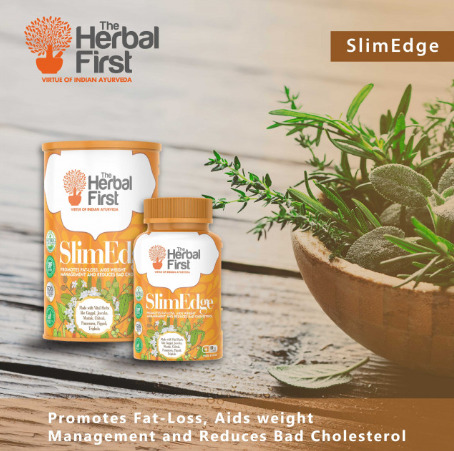
SLIM-EDGE doesn't stop there. It's formulated to address the emotional aspects of weight management too. With mood-enhancing compounds like saffron and rhodiola, this formula supports a positive outlook, helping you overcome emotional eating and stress-related hurdles that often accompany the journey to a healthier lifestyle. Elevate your weight management efforts with SLIM-EDGE's comprehensive approach. As you progress towards your goals, feel the surge of energy that accompanies each step, and revel in the newfound confidence that radiates from within. Because at the core of SLIM-EDGE is the belief that true wellness is achieved through balance and empowerment. Join the countless individuals who have unlocked their potential with SLIM-EDGE. Embrace the fusion of science and nature, where innovation meets tradition to create a formula that's as unique as you are. Reimagine your path to a healthier you. Choose SLIM-EDGE and redefine what's possible on your journey towards lasting well-being.
Soul-Mate
Unveil a new chapter of intimacy and vitality with Soul-Mate, your ultimate companion for enhancing libido, boosting stamina, and optimizing overall health. Crafted to rekindle the flames of desire and invigorate your well-being, Soul-Mate is the key to unlocking a harmonious and passionate life. Soul-Mate isn't just a product; it's a journey towards deeper connections and elevated experiences. This potent blend is meticulously curated to address both the physical and emotional aspects of intimacy. With a harmonious fusion of traditional aphrodisiacs and modern scientific advancements, Soul-Mate empowers you to embrace your desires with confidence. Experience the power of time-honored ingredients like maca root and horny goat weed, renowned for their ability to stimulate desire and enhance sexual performance. These botanical treasures are enriched with essential nutrients that not only support your reproductive health but also contribute to your overall vitality.

Soul-Mate goes beyond enhancing intimacy. With ingredients like ashwagandha and ginseng, it offers a holistic approach to well-being by reducing stress, boosting energy levels, and supporting hormonal balance. This comprehensive support ensures that your journey towards a passionate life is built on a foundation of wellness and vitality. Rediscover the thrill of deep connections and vibrant health with Soul-Mate. Feel the surge of confidence as your stamina rises, igniting a spark in your relationships and in your everyday life. Embrace a product that believes in the power of passion and the significance of holistic wellness. Elevate your experiences, embrace your desires, and nurture your overall health with Soul-Mate. Choose a life where intimacy and vitality thrive hand in hand. Make Soul-Mate your partner in this transformative journey and rediscover the joy of a harmonious and passionate life.
0 notes
Text
Nurturing the Crown: Empowering Hair Growth Oil for Black Women's Beautiful Tresses
Introduction:
In the realm of beauty and self-expression, the significance of hair transcends aesthetics—it represents a powerful connection to identity, culture, and self-esteem. For Black women, their tresses are a crown of pride, embodying a rich heritage and a symbol of beauty. "Nurturing the Crown: Empowering Hair Growth Oil for Black Women's Beautiful Tresses" invites you to embark on a journey that celebrates the unique needs and beauty of Black hair. This guide unveils a specialized approach to hair care, focusing on hair growth oils that empower, nourish, and enhance the natural beauty of Black women's tresses.

The Essence of Black Hair:
Black hair is a tapestry of diversity, characterized by its rich textures, coiled patterns, and unique structure. Understanding the intricacies of Black hair forms the foundation of nurturing its growth and beauty. From the role of moisture retention to the challenges of breakage and maintaining length, this guide explores the essence of Black hair and the strategies that optimize its health and growth.
Empowerment Through Nourishment:
Empowering Black women's tresses begins with nourishment at the root level. The guide delves into the power of hair growth oils, specifically tailored to address the needs of Black hair. These oils serve as potent elixirs, delivering essential nutrients, vitamins, and moisture to hair follicles. Through this nourishment, hair is fortified, breakage is reduced, and growth is stimulated, fostering a journey towards stronger, healthier, and longer tresses.
Nature's Elixirs:
Nature's bounty offers a range of oils, each bearing unique properties that cater to the needs of Black hair. From the hydrating embrace of jojoba oil to the strengthening effects of castor oil, these elixirs become allies in the quest for optimal hair health. The guide delves into the benefits of these oils, their role in promoting growth, and the art of blending them to create customized formulations that cater to Black women's unique hair needs.
The Ritual of Application:
Applying hair growth oils becomes a ritual of self-care and celebration. The guide introduces techniques such as the LCO (Liquid-Cream-Oil) method, a step-by-step approach that ensures maximum moisture retention and nourishment. By understanding the timing, frequency, and gentle massage techniques, Black women can optimize the absorption of oils and cultivate an intimate connection with their hair.
Holistic Hair Wellness:
Beyond external care, holistic hair wellness encompasses a spectrum of practices that nurture the mind, body, and spirit. The guide explores the role of hydration, nutrition, protective styling, and stress management in fostering a holistic approach to Black hair care. By embracing self-love and celebrating cultural identity, Black women unlock the full potential of their beautiful tresses.
Cultivating Confidence:
"Nurturing the Crown: Empowering Hair Growth Oil for Black Women's Beautiful Tresses" is more than a guide—it's a celebration of identity, empowerment, and self-expression. As Black women embark on this transformative journey, they tap into a legacy of beauty, strength, and resilience. By embracing specialized hair growth oils and holistic care, Black women nurture not only their tresses but also a deep sense of confidence, pride, and the radiance that shines from within.
Conclusion:
The journey to nurturing Black women's beautiful tresses is a testament to the power of self-care, cultural celebration, and the embrace of nature's gifts. By incorporating specialized hair growth oils into a holistic approach to hair care, Black women empower themselves to foster optimal hair health, vibrant growth, and a radiant crown that reflects their unique beauty and heritage. As Black women embrace this path of empowerment, they not only elevate the health and beauty of their tresses but also embark on a transformative journey of self-love, confidence, and the timeless allure of Black excellence.
0 notes
Text
29. Dana Davenport & LaRissa Rogers
Dana Davenport and LaRissa Rogers discuss their experiences as Black and Korean artists and how their research and life experiences have led them to work with specific materials, motifs, and ideas. They discuss their work through the framework of family history, belonging, and Black-Asian futurity/solidarity.

Dana Davenport (DD):
Hi LaRissa! I'm so excited to chat with you about our practices, expressions of identity, and interconnected histories. I came across your work a few months back while doom scrolling on Instagram. Unlike most days, I can say it was productive as it brought me to your work. I was thrilled to come across another Black and Korean artist working within similar mediums (sculpture, performance, and video). I was equally as excited simply to meet another Black and Korean person. I asked our mutual friend, TJ, to introduce us and now here we are. As I began to dive deeper into your work, I discovered so many throughlines in how you utilize the body, draw from familial history, and use specific materials to dissect identity. Perhaps, as a place to start off, can you talk a bit about your relationship to the materials that you're currently working with?
LaRissa Rogers (LR):
Hi Dana! I am very excited you extended the opportunity for this correspondence. Similarly, I found your work doomscrolling on Instagram a few years back, and I was immediately a fan. It was exciting to see someone working through their identity, familial history, and materiality as a Black and Korean femme. Then a few years later, I received a lovely email from TJ, mentioning you were in LA and introduced us! It was such a great surprise, and I am so excited to start this relationship and pick your brain! Haha.
For me, material history is the easiest way to dissect and draw parallels to identity formation and larger narratives around diaspora, migration, belonging, violence, labor, care, etc... At the moment, I am working with porcelain, sugar, and soil. I began working with soil in 2019, almost as a default. I had just finished a project, “We’ve Always Been Here, Like Hydrogen, Like Oxygen,” which was a performance on the Richmond slave trail. The performance consisted of me washing my body with oranges as a ritual of self-care. At the time, the BLM uprisings were happening, Breonna Taylor was assassinated, AAPI hate was high, and I was paralyzed by the similarities in the political landscape of LA in 1992 and the current times. For me, oranges were a direct link to the Latasha Harlins murder and the erasure/silencing of Black women and girls. But, this case is very layered and complex. It's about anti-blackness, fear of others, misinterpretation, the legacy of slavery and policing, the corrupt judicial system..and I could go on. But, essentially, we have to look at this event holistically and consider all of the ways internal and external anti-blackness showed itself in violent ways. I wanted to use the Richmond slave trail and the African burial grounds to think through how we are implicated through landscape and history. It was also important for me to link temporalities and draw out similarities between these three moments in time. This performance was an outcry, an attempt at asking: “what does it mean for Black women and girls to be protected and cared for?” The title of the piece stems from a Dionne Brand quote, when the descendants of enslaved people meet their ancestors in a slave castle – where the ancestors say in awe: “you are still alive, like hydrogen, like oxygen.”
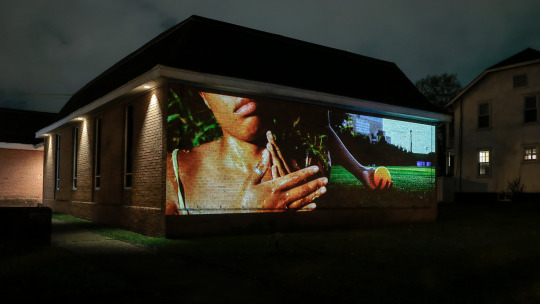
LaRissa Rogers, We've Always Been Here, Like Hydrogen, Like Oxygen, 2020. Double channel video Installation, 7min 22sec. Installed at Resurrection Lutheran Church, Richmond, VA.In Light 2020: Safety and Accountability. Photo Courtesy of 1708 Gallery. Photo by David Hale.
LR:
This work leads me to work with soil. I was in online grad school at the time and had just moved back to Virginia (where I was born and raised) and did not have a studio. So, naturally, the landscape became that for me. As we already know, Virginia is a fraught place. I lived in Richmond for several years while attending undergraduate school and stayed a bit after. But, I was born and raised in Charlottesville, VA. Reading the news one day, I encountered this article about Pen Park. I grew up going to this park when I was young. My mom would take me to play at this park while we waited for my brother to get out of school. My father golfs there as well. But, Pen Park used to be an antebellum plantation. At Pen Park, there is a golf course, and on the golf course, there are unmarked slave graves. This place is not acknowledged. Around this time, I was also thinking heavily about monuments. The confederate monuments in Richmond were getting pulled down, and it seemed like every major city around the world was having conversations about their relevance and relationship to collective memory.
In Christina Sharpe’s In The Wake, On Blackness and Being, she speaks about residence time. She describes the residence of sodium held within the body being 260 million years, in relation to the enslaved Africans who were thrown, jumped, or dumped in the ocean during the middle passage. This residence time allows one to begin to think through the terms in which we understand the conditions of Black suffering. In contrast to water, the body takes approximately 200 years to return to dust when buried in the ground. As the nutrients of the body disintegrate back into the earth, how can thinking through residence time in the soil help us understand what it means for Black people to suffer when suffering is the ground?
Given how closely Black people are indexed to death, soil also holds the capacity to speak to regeneration. Historically, it is a place of Black resilience and possibility through geophagy, slave gardens, revolts, and the migration of African plants and foods to the Americas by way of women smuggling seeds in their hair during the middle passage. Soil is a living archive and speaks to the nonlinear nature of time. Saidiya Hartman’s theory of temporal entanglement questions how we narrate historical time when thinking about the afterlife of slavery. She calls us to examine the intersections where the past, the present, and the future, are not discretely cut off from one another, but rather, we live in the simultaneity of that entanglement. The ephemeral nature in which many traditions, stories, and ways of knowing are preserved in Black, Brown, and Indigenous communities becomes visible in intangible ways due to colonization. Methods of remembering that cannot be held but are protected through and within the people themselves.
Using this as a framework, I did a few projects with soil, Virginia soil, and soil from different locations with historical relevance. You can see my attention to soil in the works “Ode to soil” “A Poetic of Living” and “On Belonging: The Space In Between.” As a material, soil does a lot for me.
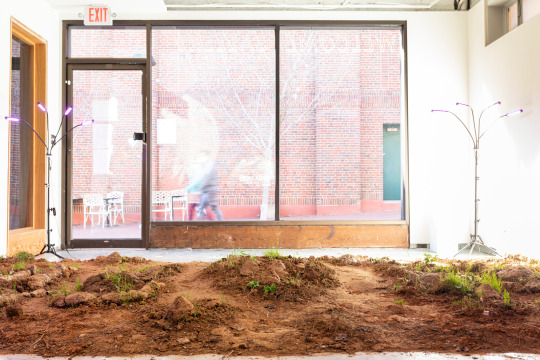
LaRissa Rogers, A Poetic of Living, 2021. installation, Dimensions Variable, Soil from Pen Park and Farmington Country Club, Celosia, Fungus, Oxygen, Light, Care. Photos courtesy of Welcome Gallery. Photos taken by Stacey Evans.
LR:
I am also working with porcelain and sugar. I began researching sugar after my project with oranges in 2019. We are all familiar with the sugar trade and its relationship to the transatlantic slave trade in the Americas and Global South. But I am also interested in how sugar functions today within the US context. It disproportionately affects Black and Brown communities – operating similarly to that of the plantation system. My family has a history of diabetes and sugar-related complications. Alternatively and historically, sugar is a commodity that has connected all four continents. The first significant wave of Korean laborers worked in the sugar plantations in Hawaii. There is also an expansive history of coolie workers and indentured servitude related to sugar in the US. In the 18th and 19th centuries, sugar pastillage was used by European royalty to create table displays for admiration, then consumed at the end of the night. The sugar sculptures became a status symbol often, displaying racialized and exoticized images. With the decline in sugar’s value and the impossibility to preserve the sugar sculptures for long stints of time, sugar pastillage was substituted for porcelain. This porcelain is commonly coveted within upper-class white homes as "fine china.”
Right now I am delving deeply into Anne Cheng’s work around ornamentalism. In yellow feminist theory, the Asiatic subject becomes ornament. Whereas in Black feminist theory, the Black body is bare life, these relationships are important to me and start to touch on the complexities of my afro-asian identity and how I experience violence navigating within a world that prioritizes skin. Thinking through these two materials and their relationship to the body, the mouth, the act of hunger, the ornament – become what Anne Cheng describes as the divergence between Black flesh and Yellow ornament. Using the scars from being whipped on Sethe's back in Toni Morrison’s Beloved as an example, Anne Cheng articulated that the flesh that passed through objecthood needs ‘ornament’ to get back to itself.” This is where ornamentation, particularly the chinoiserie pattern I am researching right now becomes a nuanced symbol and not just a decoration. There are moments when the wound needs ornament – we see this a lot in Black material culture through the use of gold, chains,” swag” –but there are also many times when the wound and the ornament cannot be compared.
The chinoiserie pattern, which the blue willow pattern stems from, was something I grew up around. My mom is Korean, born in Seoul. She was a war baby and orphan brought to the US by a Black soldier stationed in Seoul during the Vietnam war. It is crucial to realize the complexity of her story on a macro and micro level. Her story is a byproduct of US imperialism in Korea, GI babies, and the beginning of Korea's large adoption project that set legislation in place to rid the country of “unpure” Koreans. At this time, there was also sanctioned prostitution of Korean women for the American military resulting in a wave of Korean mothers and American fathers, who eventually moved to the US.
For my mom, once brought to the US at age four, her adoption requirements were never fulfilled, so she remains stateless. She was raised by my grandfather's mother in a poor Black household in Madison, VA. My father, a Black man, was similarly raised in a very poor neighborhood in Newport News, VA. Growing up, my mom decorated the house in this blue and white greenware. I was unaware of the history of blue and white greenware or chinoiserie, but I was always curious about this decision. I read it as a representation of a heritage or place (Korea) that she no longer had access to. My new body of work delves into this pattern, chinoiserie -- a pattern adopted by the Europeans as an idyllic and exoticized interpretation of Asian people and life. I am interested in its relationship to diasporic distance, belonging, and everyday violence that upholds white supremacy. I am also interested in this conversation surrounding the influences, perceptions, and interpretations one performs in the creation of self. The way this pattern, a distant interpretation, a fantasy of others, became removed from its violent history within the home, assumed, and merged with a Black interior aesthetic to create a new language – one that exists in the in-between, the liminal.
For me, the liminal is parallel to notions of authenticity when working with this pattern and being mixed-raced. One should always question their perceptions of purity and outside influences of authenticity. Where does culture begin? With the start of global trade in the 18th century and the rise of capitalism — cultural symbols and objects were constantly being assumed, consumed, merged, adopted, and recontextualized. It’s a violent process. But, in specific situations, this cannibalization or hybrid transformation impacts intersecting identities and allows the violent collision to become something greater than just the violence—especially for those who have been exiled. Edward Glisssant calls this “opacity” – or a lack of transparency for and toward the other– that can “coexist and converge weaving fabrics.” He states that “To understand this truly, one must focus on the texture of the weave and not on the nature of the components.” For me, opacity has become a strategy for engaging cultural multiplicity and diasporic imagery of resistance and power. Opacity allows you to be fully seen without being owned. It allows you to occupy spaces you may not be seen as a member of. Opacity and what Fred Moten coins as “fugitivity”-- “a desire for and a spirit of escape and transgression of the proper and the proposed…a desire for the outside, for a playing or being outside, an outlaw edge proper to the now always already improper voice or instrument”-- creates portals for seeing and being seen.
Also, a fun fact, the chinoiserie pattern was used by the founding fathers (Thomas Jefferson, James Madison, etc..) to reinforce symbols of enlightenment that uphold race within architecture commonly found in Virginia...
But, I am curious and would like to ask the same question. What materials are you working with right now, and how does your background inform those decisions?

Dana Davenport, Dana’s Beauty Supply ~and relaxation space~ (detail of family photo)
, 2021,
Installation at Recess Art
, Photography by Mary Kang
DD:
Wow, thank you for so eloquently sharing your relationship to the materials you’ve been working with. Your use of material and the histories that they hold really resonate with me. As you know, I was born in Newport News, Virginia and raised in Seoul, South Korea. Although Virginia is not a place that I’ve spent much time in, much of my dad’s family is scattered throughout the Virginia area so it’s where we meet for family reunions and such. As a kid, I went through many different phases. One of those phases was an obsession with America (and therefore Virginia) and claiming my Americanness to my friends who also went to school on the military base in Seoul. It sounds silly to want to “prove” your Americanness while literally going to school on an American military base. But, you know how kids can be. They’ll find anything to pick on someone about. Haha. What I didn’t know or understand at that time is how fraught of a place Virginia was and still is. The way that Virginia existed in my mind as a place that validated my belonging even though I was thousands of miles away, versus the reality that even if I lived there, there would be a constant battle for the contributions of my ancestors to be acknowledged, was definitely a plot twist for me and something that I’d become more exposed to as I’d visit more frequently over the years in middle and high school. There is something eerie about being in Virginia, walking on the land, yearning to connect with ancestors, cultures, histories, and languages that have been buried in the soil. When I feel this yearningness, it’s humbling to remember that these histories exist through and within me.
I didn’t know that the first significant wave of Korean laborers worked on plantations in Hawaii! This is really interesting to hear, as my partner and I visited a friend in Hawaii a few months back and didn’t know much about the migration of Koreans (and other Asian folks) to the islands.
I’m really interested to learn more about your exploration of chinoiserie patterns. I see your use of it in Licked Until Your Tongue Rubbed Raw, 2022 and in On Belonging: The Space In Between, 2021. Are you creating the chinoiserie patterns yourself? It is quite interesting how this pattern has shape shifted and been adopted into Black interior aesthetics. I’m intrigued by aesthetics that seem to exist in between and thinking of ways that we can create visual languages around Black and Asian experience, solidarity, and futurity.
For the past several years, I’ve been working with synthetic hair and hair care products as a material that binds Black Americans and Korean Americans through the beauty supply industry, an industry that we know is overwhelmingly Korean-owned with a primarily Black consumer base. Prior to this, I was doing a lot of performance work but became weary of having to rely on the presence of my physical body in my work in order to discuss not only the tensions that I felt in being a Black and Korean woman but also everyone else's interpretations and projections of the conflicts between Black and Asian communities. It was a lot to carry. After a particularly uncomfortable performance at a “prestigious” space with a nearly all white, generationally rich audience, I took a step back from performance. At that time, I simply didn’t know how to continue doing that work in a way that was also protective of my body and my experiences. So, in saying that, I was seeking out a material that could serve as a proxy for my body. I began to think deeper about hair care and the experience in obtaining these materials.
When I first moved to NY from Korea after graduating high school, I remember being baffled after walking into a beauty supply store and seeing that the folks behind the counter were Korean. This was odd, as there are basically no beauty supply stores that cater to Black hair in Korea, and there wasn’t really any talk of how this industry in the US is dominated by Koreans. I started to experiment with speaking a little Korean here and there and it would not only confuse the Korean employees and store owners, but it’d severely improve the treatment that I received. I’m talking, free samples, the works! It was an uncomfortable reality of privileges that I hold. Disclaimer: I don’t speak Korean fluently so it took some courage and pepping myself up to actually speak Korean in public. All of this being said, I became obsessed with hair, hair care, and the beauty supply as a space to be reimagined where we can have critical dialogue around our collective history while envisioning Black and Asian futurity. In this reimagining, I return to the past and think about other businesses that are Asian-owned, in Black and Brown neighborhoods and how they are some of the few spaces where Black and Asian folks may find themselves intermingling. I think about the murder of Latasha Harlins. I think about my mom’s friend who’s worked at a beauty supply store for more than 20 years in Virginia (my mom and her friend are both Korean). I also think about early Chinese immigrants that opened grocery stores that served former slaves. They were successful because they offered goods at lower prices compared to plantation commissaries that inflated their prices to keep former slaves in perpetual debt. And of course, I consider the ways in which The National Housing Act of 1934 made it nearly impossible for Black folks to start businesses within their own communities.

Dana Davenport, Dana’s Beauty Supply ~and relaxation space~
, 2021,
Installation at Recess Art,
Photography by Mary Kang
DD:
You studied Painting and Printmaking in undergrad at VCU and are now at UCLA in New Genres. Can you talk a bit about your journey from painting and printmaking to sculpture, performance and video?
LR:
Thank you for your openness and criticality in articulating the tensions that arose from your experience, material practice, and journey as an artist. I resonated with many things you said and even found myself getting out of my chair and snapping my fingers in agreement because of it. Haha.
Firstly, when you were talking about your experience growing up in Seoul on a military base and feeling the need as a child to prove your Americaness – your virginianess -- was something I connected to. In my case, because I was born and raised in Charlottesville, it was not necessarily my Americaness I felt the need to prove, but my Asianness. I went to a predominantly white, upper-class private school, and I distinctly remember this moment on the playground when I was asked by a white classmate “What are you?” At this moment, I already knew I was different. I was one of maybe three Black kids in my grade for many years, but as a child, I had recognized the cultural currency my mom held as a Korean woman that my dad did not as a Black man. At that moment, I felt the need to legitimize my Assianness because I thought it would give me some sort of advantage. I longed to be accepted and included by my peers. There was always a feeling of not being accepted by the Black community or the Korean community. This was for a lot of reasons. My mom's relationship with her motherland was severed. Her connection to Korea and any sort of Korean roots is fragmented. Mine even more so. I did not grow up around other Koreans. My body also gets read as Black in the US. My Blackness has been prioritized because it has been perceived as more of a threat. How do we begin to talk about psychological violence? How do we begin to talk about these entangled and complex realities and relationships between Black and Asian futurity? How can we talk about belonging and arrival in the context of Black and Brown worldmaking? What are the tensions between belonging and fugitivity? Beauty and horror? Opacity and transparency?
Right now, I’m really sitting with Saidiya Hartman's offerings around monstrous beauty.
I say this and also recognize the privilege and complexities I hold being mixed-race.
I love your work and how you use the body as a material. Not just physical body, but hair as body. You asked about my relationship to the medium, particularly studying painting and printmaking and working primarily in sculpture and installation now. My journey was very similar to yours in a sense. In high school, I began to consider art as a career, and my introduction was primarily through painting. I fell in love with oil paint. The layering of color and texture, the manipulation, and the capacity for a single brush stroke to encompass expression and emotion. I went into undergrad knowing I wanted to be a painter. After the first year, that reassurance shifted. I took a time-based media class, and I was not great at making videos– but I did one performance, and something clicked. Through movement, material, place, and sound, I was able to tap into a sensory experience that felt more true to the emotion and criticality I was attempting to create in figurative painting. In the last two years of undergraduate school, I didn’t make a single painting. I began to work with hair and created a series of videos, sculptures, and performances that tried to pull out some of these tensions I felt navigating my identity.
I continued to make videos after undergrad, but I didn’t consider myself a sculptor at the time. It wasn't until after I graduated that I found object making through installation. Painting was such a distant memory at that point. Another reason I didn’t continue with painting is that I felt it was not able to do what I needed it to do. It couldn’t tell the story I was trying to convey, and the history of the medium is so fraught. I didn’t want to contend with it.
I then moved into performance. In the work with oranges, I was thinking of my body as orange. But, as I continued to perform, I would similarly get triggered. Especially performing to predominantly white audiences. This felt unsafe for my body and experiences. It got so exhausting that at one point in “My body is the architecture of my Every Ancestor,” (performed a few days after the Atlanta spa shooting) I performed inside the gallery through their “storefront window” making the audience watch the performance outside. I then pushed back the audience even further — to the sidewalk— to view the performance. I was trying to create distance, some sort of mediation of the violence of the audience, their gaze, and their interpretations of my body. I felt like an open wound, especially after my first year of graduate school. I felt vulnerable and constantly oozing…constantly being split open. Looking back, this is the moment I subconsciously turned to material as a stand-in for my body. A proxy that could be read in relationship to, but without my physical presence. This also allowed for larger narratives and histories to merge into the work.
As I continue to make performance and work that is non-archival in nature, I ask myself, what does it mean to build a practice that resists collectability/ownership and demands extensive care for its upkeep? As an ethos, how can I resist the market as a place of only transaction?
Going back to your question surrounding chinoiserie. I am starting to create the patterns myself. In "On Belonging" and "Licked Until Your Tongue Rubbed Raw '' I had not started to create my patterns yet. At the time, I was still grappling with the dissemination of these patterns. For my mom, it was less about the particular landscape within the pattern but more about the blue, white, and porcelain combination. You can now see within an American interior aesthetic, blue and white has become an interior decorating staple. The blue and white pattern has been adopted by many different cultures around the world. The interpretations, redactions, translations, adoptions, and reinterpretations don’t stop haha. This was intriguing to me because this pattern is synonymous with the colonial project. At that moment in time, I wanted this aspect of the work to be digested. The everydayness of this violence within this pattern. I was using generic interpretations of the chinoiserie to talk about the interpretation of the interpretation. The didactic. The performance of it. But now, I am less interested in that and more interested in how the pattern can be flipped or incorporated into my myth-making to generate something else. Similar to how I witnessed the pattern functioning in my home - a place of a combined Black and Korean interior aesthetic (though blue and white stems from a Chinese tradition). I am currently meditating on the beauty my mom has created through proximity of objects within the home. The rituals she has implemented so our family can begin to mend generational ruptures. For her, these mendings happen with food, and at the table. A type of physical and emotional nourishment that can happen in the home. This ability to mend and create beauty out of the monstrous, out of violence— it is a superpower. It is the Black radical tradition. It is the in-between. It is in the liminal. It is neither here nor there. It is the place where entanglement creates new futurities. It is everything all at once.
I am also curious about the aesthetic merging that happens in your work. Especially the chandeliers and Synthetic hair. Can you talk more about why the chandelier and how you landed on that form/object?
Also, in your works ``Much Love” and “experiments for relaxation” you’re working with multiple notions of care. How are you thinking through the registers of care that are required to nurture a critical dialogue surrounding Black and Asian futurities and solidarity? More specifically, What care is required to nurture yourself, your history, and your family's story? How are you thinking through care, and how do photography and family archives aid in telling this story?
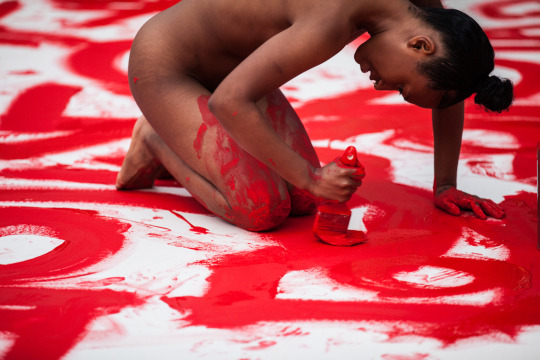
Dana Davenport, 흑인 (heugin)-black person,
2017,
Performance at Watermill Center,
Duration: 2hrs,
Photography by Maria Baranova
DD:
Ahhh, that very familiar feeling of wanting/needing to prove your Asianness. It’s wild that even at a young age, we unconsciously understand privilege and where one is situated within that system. While I was obsessed with America for a bit, that phase was short lived. My desire to “prove” my Asianness is unfortunately something that has taken much longer to shake off. In a lot of ways, my art practice played a huge role in that process. It provided me an unrestricted space to express all of the messy, contradicting, and nonlinear feelings that I was moving through. Initially, it was a lot of bottled up anger, a desire to be embraced by Korean culture while simultaneously resisting it in fear of rejection. This is most clearly articulated in my performance piece “흑인 (heugin)-black person”. In this performance, I write the word 흑인 repeatedly on a blank canvas on the floor. Gradually, the task became more aggressive resulting in exhaustion, examining the arduous notion of performing identity. Have you found that your relationship to Korea/Koreaness has shifted over time? And if so, what was influenced these shifts?
While our experiences differ in ways, I’ve arrived at similar questions. “How do we begin to talk about these entangled and complex realities and relationships between Black and Asian futurity?” I definitely don’t have an answer but something that I think about a lot is where are Black and Asian folks are interacting the most and under what conditions? I feel as though, within America, store owner/customer settings are the most common spaces in which Black and Asian folks gather. Commonly, Asian-owned shops in Black neighborhoods. So, that’s where I’ve started and how I arrived at the beauty supply as a space to be reimagined.
I didn’t know that you worked with hair in the past! I’d love to see some of that work.
I’m really fascinasted by your research around chinoiserie patterns, as it’s something that I’ve seen in so many places in totally different contexts but never stopped to think about how it lived between these spaces (I also never actually knew what the pattern was called). I always viewed it as an “Asian-coded” artistic style (often seen on vases and such) but then would also see as a wallpaper in some preserved colonial mansion in Virginia and not think twice about the overlap between the two. This pattern is truly a chameleon! I love how you are thinking about the next lifeform of this pattern, how it can shape shift to reflect a new culture, a combined cultural aesthetic, how it can be flipped as a tool to mend wounds. As you said, it is our superpower to mend and create beauty out of the violence we and our ancestors have endured.
When I began working with hair, I started with simple domestic objects. A vase, slippers, rug, etc. I wasn’t really sure why, I was just drawn to it. As someone who studied Photography in undergrad, I hadn’t really considered myself a “maker” and definitely didn’t have the tools at that time to create the sculptures that I’d envisioned. Out of the many ideas that I’d jot down (and often talk myself out of trying) creating a chandelier was one that stuck. In the Summer of 2018, a family friend, Dan, offered to teach me how to weld. That changed the game for me as far as the tools that I had to create. Initially, I was drawn to the chandeliers because of their ability to elevate a material that, when worn and activated by Black folks, is criticized as ghetto, cheap, fake, and unprofessional. As I’d hang them within my studio and home, incorporate them in installations, and hang them in gallery spaces, they began to take on a protective role, setting the tone for whatever room their in and requiring that viewers look up at them with appreciation and awe.

Dana Davenport, Box Braid Chandelier #3, 블랙파워 (beullaegpawo)-Black Power, 2021, 30in x 25in, Steel, plastic beads, modeling clay, synthetic hair from Hair Style 21 (Online)
DD:
Years ago, I created a piece titled “Questions Not To Ask The Artist”. It was a large piece of wood (the size of a door) that listed several things I was simply tired of being asked by viewers of my work and visitors to my studio. I was at the ChaNorth residency at the time and I placed it right in the entry way to my studio. It served as a sort of agreement between myself and viewers entering my space. I find that the chandeliers function in a similar way.
In “Experiments for ~Relaxation” which was performed at Gibney Dance (New York, NY)I was processing alternative ways of performing that weren’t focused on the production of labor. I wanted to push myself to explore what relaxation could look like for me. What does rest look like for bodies that look like mine? How do we achieve mental and physical relaxation? The creation of this piece was chaotic. I found that it was actually quite difficult for me to achieve a state of relaxation. This pursuit, the awkwardness of it became part of the piece.
“Much Love” was a really beautiful collaboration with Jazmine Hayes at Swivel Gallery (Brooklyn, NY). Together, we created a space that spoke to restorative practices of protection and care, transforming the gallery into what felt like a domestic space. Reminiscent of your grandmothers home with pink painted walls and red carpet. A space where you were protected, where you could release, where we honored ancestral practices. The back room served as a meditation and alter space, calling forth generational repose and threading together themes of love, labor, ritual, self-care, and communal care. We interspersed our family photos and hung them throughout the space, connecting our families and our histories.
Photography and family archives are really how we mark our time in this world, how we claim that we are here. We exist. It allows us to write our own narratives and have some aspect of control over how we are represented. Family albums impact the way that we connect with the memories that we hold and how we tell stories and pass them down. My mom always made it a point to ensure that we took a lot of family photos. Unfortunately, there are only two photos that my mom has from her childhood. When she was young, her home caught fire and with it went whatever photos her family had (which probably wasn’t many to begin with). On the contrary, my dad’s family has a huge archive of photos. I recently inherited a box full of them and have had so much fun flipping through, reading all the hand written notes, and asking my reletatives who certain people are. From that box, I found a photo of my mother, sister, and a few other family members, sitting on a brown couch at my grandparents house. It had to be from 1993 or so. The carpet in the room was a dark red was nearly identical to the carpet in the “Much Love” exhibition. That was a real treat to come across.
I think that to be in solidarity with eachother we must first see eachother. Literally, seeing eachother in space and metaphorically seeing eachother within ourselves, within our histories, and as living, breathing, feeling individuals. It’s important to understand how the past factors into our realities in the present but it’s equally as important to dream of our futures. Care is conveyed when we hold ourselves accountable. When we place trust in eachother. When we can share space. For the past few years, language has played a large role in how I nurture myself and my own familial history. After years of feeling embarrassed for having lived in Korea for so long and not speaking Korean, I finally started taking Korean classes. I resisted for many many years, as I’d convinced myself that learning the language meant I was surrendering in some ways. Surrendering to a culture that rejected me and my Blackness. Honestly, I just had to get over that and understand that I can show up for myself by allowing myself the freedom to learn, to recontextualize, and to grow in this way.
I’d like to ask you the same question. It feels like a beautiful note to come to a close on. How are you thinking through methods of care as a tool to nurture critical dialogue around Black and Asian futurity and solidarity? What care is required to nurture yourself, your history, and your familial lineage? And how does photo documentation and family archiving contribute to these forms of storytelling?

LaRissa Rogers, My Body Is The Architecture of My Every Ancestor, 2021. Performance, 1 hr 15 min. Performed at the Bridge Progressive Arts Initiative. Photos taken by Chan Williams.
LR:
You begin your response by asking if my relationship with Korea/Koreaness has shifted over time, and I think it has. The work is a direct timeline of that shift. The Latasha Harlins case was my first stepping stone. The interaction between Soon Ja Du and Latasha Harlins speaks right to your articulation of what solidarity requires– for us to see each other individually and collectively within shared experiences and histories. Within Latasha Harlins’s and Soon Ja Du's interaction, there were fundamental misinterpretations of the “other,” and those misinterpretations are based on our system that can only survive by pinning us against one another. In “We’ve Always been here, Like Hydrogen, Like Oxygen” I directly speak to this in some of the text overlaid in the video which reads, “you and I are connected.” When I wrote it, I was thinking of Latasha Harlins but also Soon Ja Du. This conundrum reminds me of a quote I read from Scott Kurashige that states: "The 'model minority' stereotype isn't meant to define Asian Americans. Rather, it's meant to define African Americans as deficient and inferior to white people by using Asian Americans as a proxy...It was never an accurate portrayal of Asian Americans." Though I had discomfort, sometimes anger, a deep sense of loss, and a longing to be more connected to my Koreanness I needed to recognize within myself why I felt tension and separation. I use my art as a way to heal and as a means of owning my Koreanness while acknowledging my positionality within it as someone distant from the place and culture. Coming to terms with this was something I had to get over and required me to be soft with myself. But care is hard! Often we forget that. Care is a lot of work. Sitting within the pain, within the hold – as Christina Sharpe would say is not pleasant work. That is what I am trying to do with my work. It is also how my relationship with my Koreanness shifted. I am no longer preoccupied with proving my Koreanness, legitimizing it, or ignoring it, which I did for many years. Embracing and attempting to learn my history and heritage-- one I also feel does not fully embrace me at times– is an attempt to understand my mother's experience, my experience, my father's experience, and the histories of entangled experiences. It is not an either-or. It is a both and. A hybrid approach that has allowed me to reject categorization and politics of authenticity that felt restricting and violent.
It's interesting to hear you speak on the few images your mother has of her childhood because similarly my mother only has a couple of images left from when she was a child in Korea. Her father discarded most of them when she was young. Alternatively, my grandmother on my mom's side made many photo albums. When she died, the photo albums were gifted to us. In my last year of undergraduate school, I remember going through all of the photos for the first time. I would ask my mom about members of the family that I could not identify. This was a way to connect to my family and the family my mom adopted into. My grandma also loved embroidery, and every so often when I was going through the box of photographs I would find notes on the back of images, and embroidered handkerchiefs with quotes or rhymes. It was really surprising for me to discover these notes because I would never classify my grandmother as a jokester. But, a lot of the images had inside jokes written on the back of them. It was an entirely new way I understood my grandmother. By 2019 my grandmother had passed away, but I had a show “Invisible Weight” where I used her embroidered handkerchiefs as a mode of rememory and collaboration.
My great-grandmother was also a great archivist, though many family photographs were lost in a house fire.
Growing up, my mother was very good at documenting our lives. My siblings and I have a “life book” that tells our childhood story until high school. Many photos in my “life book” show up in my “Brown Paper Bag Series” from 2019. This book includes adoption photographs, songs, family vacations, holidays, and images of loved ones. Looking back, this was another present my mother gifted the family as a healing mechanism. She continued a labor of care that women in my family had done for generations. She made sure we documented our lives so we could feel seen and know where we came from. How does one memorialize the everyday? I would argue, through family archives – visual and embodied.
Solidarity requires grace. I have eight siblings, and most of them are adopted. Despite adoption, my family is close. Our home was also a foster home for many years. People cycled through, all of who came with their own “baggage.” I learned at a very young age that communing with people from different experiences and backgrounds requires empathy and grace. Grace for others, and yourself. Grace softens. Grace allows us to listen and hear, to nurture and understand. Grace creates space for everyone's story, history, and experience. In order to create new futures we need to acknowledge the past is not the past and difference is inevitable. Yet, through acknowledgment and accountability, new ways of being can emerge. In the words of my mother, care and repair requires one to "die to self."

Dana Davenport (b.1994) is a Korean and Black American interdisciplinary artist raised in Seoul, South Korea. She is currently based between Los Angeles and New York City. Her work shifts between installation, sculpture, video, and performance. Davenport's work has been shown throughout the United States and internationally including Gibney Dance, New York, NY; Watermill Center, Water Mill, NY; NYU Skirball, New York, NY; Brown University, Providence, RI; Swivel Gallery, Brooklyn, NY; Cultural Center Recoleta, Buenos Aires, AR; and Seventh Gallery, Melbourne, AUS, to name a few. Davenport is currently a 2023 Center For Craft Fellow and Bandung (MoCADA + A4) Artist Resident. She was selected for the Recess Session Residency in 2021, and received the 2018 Chashama ChaNorth Fellowship. She co-organized Free Space, month-long programming at Miranda Kuo Gallery in 2018, and is the founder of Dana’s Beauty Supply.
www.danadav.com
@dana_dav
LaRissa Rogers (b. 1996) is a Black and Korean antidisciplinary artist raised in Ruckersville, VA. She is currently based between Virginia and Los Angeles. She holds a BFA in Painting and Printmaking and BIS in International Fashion Buying from Virginia Commonwealth University. Rogers has exhibited and performed in institutions such as Frieze Seoul (Korea), Documenta 15 (Germany), Fields Projects (NY), 1708 Gallery (VA), Second Street Gallery (VA), Black Ground (Colombia), W Doha (Qatar), The Fronte Arte Cultura (CA), LACE (CA), Grand Central Art Center (CA), and the Museum of Contemporary Art (VA) among others. She received the Visual Arts fellowship at the Virginia Museum of Fine Arts (2022) and the Black Artists and Designers Guild Creative Futures Grant (2022). Rogers attended the BEMIS Center of Contemporary Art Residency (2022), Black Spatial Relics Residency (2022), and SOMA (2019), among others. Rogers is currently pursuing her MFA in New Genres at the University of California Los Angeles.
www.larissamrogers.com
@larissa_rogers
0 notes
Text
I gotta have faith
In this episode I talk about faith and what that means when it comes to moving into something in my healing/liberation journey. There are no guarantees when it comes to seeking external validation and confirmation, the trust and confidence has to come from within. Leaning on Spirit, or any higher power than my human self, means that I must walk with assuredness and know that no matter what, Spirit has my back. No more hyper vigilance.
#black women spiritual wellness#healing spaces for black women#empowering black women spiritually#sacred self-care for black women#black women's holistic healing#mindfulness for black women#inner peace for black women#spiritual growth for black women#wellness resources for black women#black women's meditation practices#self-discovery for black women#affirmations for black women#holistic wellness for black women#mental health support for black women#community for black women's spirituality#black women's holistic living#nurturing spirituality in black women#holistic self-care for black women#healing journey for black women#black women's spiritual empowerment#blackwellness#healing#ihpwellness#wellness#selfcare#selflove#qtbipocwellness#qtbipoc#spiritualwellness#blackwomenhealing
0 notes
Text
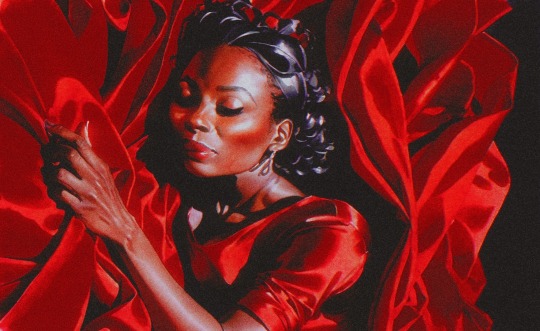
I’m allowed to feel good.
#pagan#spiritual healing#healing#spirituality#nature#paganism#earth#self care#self love#black witches#black witch#red#black women#woc#BiPoc#pagans of color#black pagans#holistic practitioner#spiritual practitioner#self empowerment#photos
14 notes
·
View notes
Text
N.S. Brotherhood Initiative provides much-needed health care needs to Black men in Halifax area
The Nova Scotia Brotherhood Initiative is a free program offering Black men access to health care in the Halifax community to improve their overall health and wellbeing.
As part of the initiative, a team of health-care professionals provide culturally-appropriate primary medical care, as well as health and wellness services, for men of African descent across the Halifax Regional Municipality.
According to Nova Scotia Health, the program's health and wellness services offered include:
primary medical care
health promotion and wellness education
chronic disease management
navigation to community resources
variety of free health and wellness programs throughout the year
Dr. Ron Milne has worked with the Brotherhood since it started in 2014. Last week, he was honoured by the organization for his contribution and positive impact.
According to Milne, many Black men don't access health care as often as they should, citing many factors including a lack of trust due to mistreatment in the past by the health-care system.
"Lack of providers who have cultural competence and understand the challenges and issues that Black men face. I think those are some of the issues," he said. "And lack of providers who look like them, who they feel comfortable with."
Milne says stigma also has a lot to do with the issue.
"Again, it's that cultural competence factor coming into it, of having people who understand the issues, the history, the challenges," said Milne.
As far as some of the medical issues that disproportionately impact Black men, Milne says there still isn't a good library of data in Canada with that information.
"And one of the things we've really pushed for with the government, and the government is committed to providing us with, data that is race-based, it would be voluntary by people who self-identify. So, historically, our data has come from the U.S. and the U.K., but there's no reason to believe that a lot of those factors aren't the same here," said Milne.
"So, diabetes, heart and kidney disease, respiratory problems, prostate and colon cancer very large. Prostate cancer in the Black male population, because often it presents at a more advanced stage for a variety of reasons, one of which is lack of trust in the system, but also … the stigma that in the Black communities, you don't talk about your health. Men try to be projecting as strong and not needing to seek help and so that's a reason sometimes that they don't get the help they need right away."
As far as how the Brotherhood Initiative is received, Milne says patients seem relaxed knowing that someone who looks like them and understands their challenges will be the one helping with their health needs.
"So, they're able to open up to us and I try to make it as relaxed as I can. Give them time, the appointments aren't rushed, we try to be holistic, so we try to look at everything starting with, ��Who are you? What's your age? Are you married? Do you have a family doctor?’ All the questions to get people at ease," Milne said.
The Nova Scotia Brotherhood Initiative is unique to Canada and now a Nova Scotia Sisterhood is also being provided to Black women provincewide.
Nova Scotia Health says the Sisterhood team:
delivers health promotion and wellness education
offers navigation to health and community resources
assists in managing ongoing health conditions
develops partnerships with community groups
provides medical care
clinical therapy (therapist on staff)
The women's initiative focuses on things like:
heart disease
high blood pressure
diabetes
screening for health conditions
mental health and addictions
nutrition and physical activity
obtaining health information specific to Black women
Milne says the Sisterhood just started seeing patients this month.
"It's fantastic the response so far," he said.
More information on the Brotherhood and Sisterhood initiatives, including locations and contact information, can be found online.
from CTV News - Atlantic https://ift.tt/k9jpYI6
1 note
·
View note
Link
Obsidian Gua Sha - Fortune Forest
Gua Sha is a skincare & self-care tool carved to carve the contours of your face! Our Black Obsidian Gua Sha Stone, ideal for both men & women, is made from 100% natural & high-quality grade Black Obsidian stone, also known as the ‘Divine stone’. Practicing Black Obsidian Gua Sha reduces skin fatigue and tightens loose skin, helps sculpt and release facial tension, giving you rejuvenated skin. Committed Gua Sha ritual coupled with right products & technique helps break up stagnant energy called chi, hence reduce inflammation, and promote holistic healing
READ MORE....Fortune Forest - Buy Natrual Skin Care Product Online, Organic Skin Care Products For Dry Skin Oily Skin
#Obsidian Gua Sha#Buy Natrual Skin Care Product Online#Organic Skin Care Products For Dry Skin Oily Skin
0 notes
Text
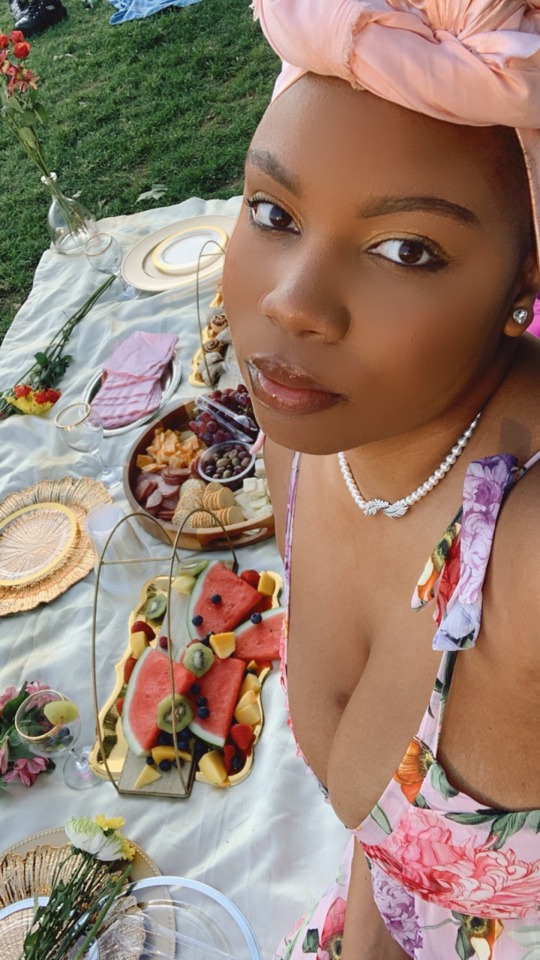

Picnic set up by yours truly 💜💜💜💜 Brooklyn Bridge Park Memorial Day 2022
#black women#luxury#black woman luxury#self care#boujee#picnic#melanin#happiness#goddess#fresh fruit#self love#fenty beauty#fashion#berries#holistic#whole foods
14 notes
·
View notes